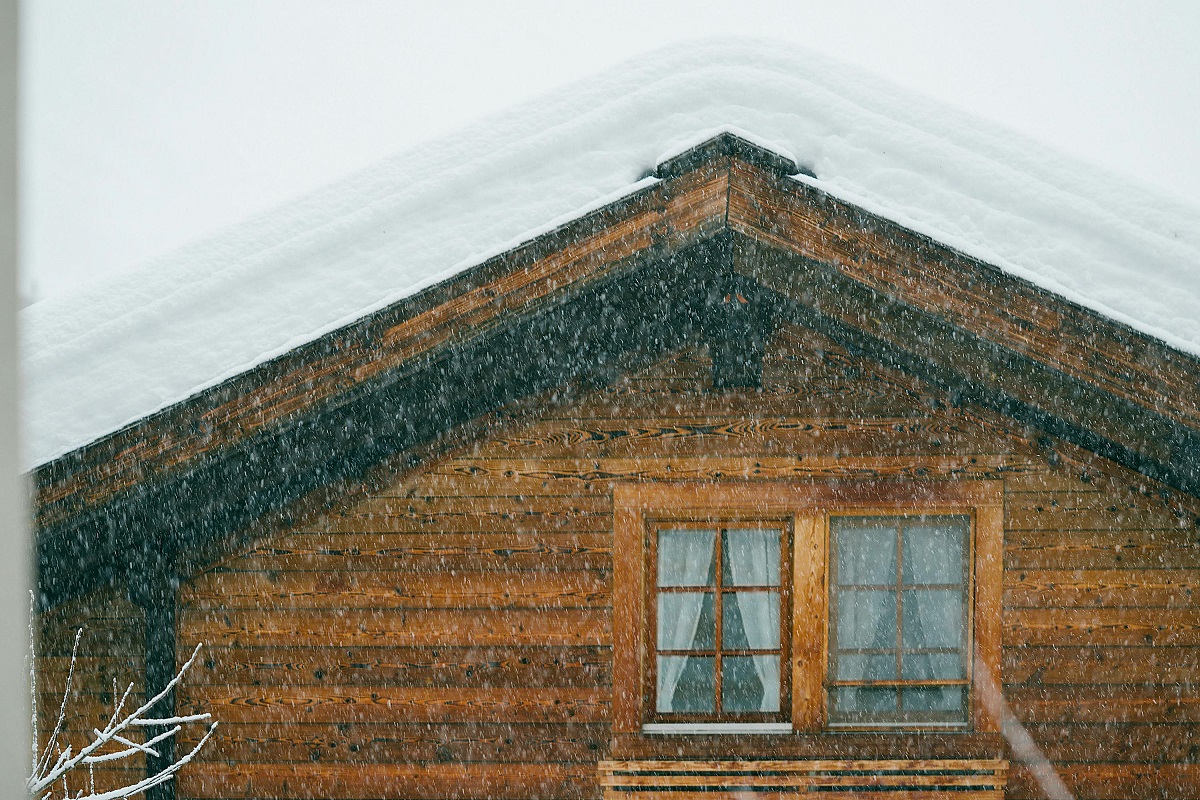
- Prevent slip and fall accidents by managing icy surfaces with salt and maintaining clear, safe pathways.
- Avoid water damage by insulating pipes and shutting off the water supply during extended cold periods.
- Trim dead or weak tree limbs to prevent property damage and injuries from heavy snowfall.
- Ensure heating systems are properly maintained and install carbon monoxide detectors to avoid poisoning.
As winter approaches and snow begins to fall, it’s important to be aware of the potential hazards that can arise on your property. Snow may look beautiful as it blankets the landscape, but it can also pose serious risks if not properly managed.
From slippery sidewalks to roof collapses, there are several snow-related hazards that homeowners need to be mindful of. This blog will discuss common snow hazards that you need to look out for on your property and provide tips on how to prevent accidents and damage.
Roof Collapse

Heavy snowfall combined with ice accumulation can put immense pressure on your roof, leading to the risk of collapse. Fortunately, there are a few things you can do to prevent this from happening. Here are four tips to keep your roof strong and stable during the winter months.
Invest in Snow Guards
Snow guards are metal or plastic devices installed on the edge of your roof. They prevent large chunks of snow from sliding off and causing damage. They can also help evenly distribute the weight of the snow, reducing the risk of collapse. Make sure you invest in quality snow guards, such as the Snow Defender 4500 snow guard, which can withstand heavy snow loads. This model is also powder-coated, making it resistant to harsh weather conditions.
Clear Snow Regularly
It’s important to regularly clear snow from your roof to prevent excessive accumulation. Use a roof rake or hire a professional to safely remove snow from your roof. You should also pay attention to the weight of the snow and ice on your roof and clear it immediately if it seems too heavy.
Inspect Your Roof
Before the winter season hits, be sure to inspect your roof for any weak spots or signs of damage. Addressing these issues before heavy snowfall can prevent a potential collapse. You should also check your attic for signs of water leaks or structural damage.
Monitor and Remove Ice Dams
Ice dams form when warm air from inside your house melts snow on your rooftop, then refreezes at the edges. This can cause significant damage to your roof and potentially lead to collapse. Be sure to monitor for ice dams and remove them promptly to prevent any issues.
Your roof is a crucial part of your home’s structure, and taking these precautions can help keep it strong and stable throughout the winter. Make sure to also consult with a professional if you have any concerns about the safety of your roof during the winter months.
Slippery Walkways and Driveways

One of the most common snow hazards is slippery walkways and driveways. When snow accumulates and then melts, it can create icy patches that are extremely dangerous for pedestrians. To prevent slip-and-fall accidents, make sure to shovel your walkways and apply salt or sand to create traction. Investing in a good quality ice melt product can also help keep these areas safe during winter.
Frozen Pipes
Another common winter hazard is frozen pipes, which can burst and cause extensive water damage to your property. To prevent this from happening, make sure to insulate exposed pipes and keep your home heated above freezing temperatures at all times. If you plan on being away from home for a long time in winter, consider shutting off the water supply and draining the pipes.
Falling Tree Limbs
Heavy snowfall can weigh down tree branches, causing them to break and fall onto your property. This poses a significant risk to both people and structures. Before winter arrives, inspect trees near your home for any dead or weak limbs that may be prone to breaking under the weight of snow. Trimming these branches before the first snowfall can help prevent accidents.
Carbon Monoxide Poisoning
As temperatures drop, homeowners may rely more heavily on heating systems such as furnaces or fireplaces. However, improper ventilation or malfunctioning equipment can lead to carbon monoxide buildup in your home—a silent killer that is odorless and colorless. Make sure all heating appliances are properly maintained, and install carbon monoxide detectors throughout your property for added safety.
While winter brings its own set of beauties and joys, it’s crucial to be prepared for the potential hazards it can also bring. From icy walkways and frozen pipes to the dangers of falling tree limbs and the silent threat of carbon monoxide poisoning, taking proactive measures can greatly reduce the risks and ensure a safer winter season for everyone. By staying vigilant and implementing the safety tips outlined above, you can protect yourself, your family, and your property from common winter hazards. Stay warm, stay safe, and enjoy the beauty of the season with peace of mind.


